Did you know that there are billions of sparrows thriving across the globe today? These small, plump birds are incredibly common and can be found in virtually every corner of the world. From bustling cities to rural farmlands, sparrows have adapted to various habitats and continue to flourish. In this article, we will explore the different types of sparrows and their unique characteristics, shedding light on the remarkable diversity of this beloved bird species.
Old World Sparrows
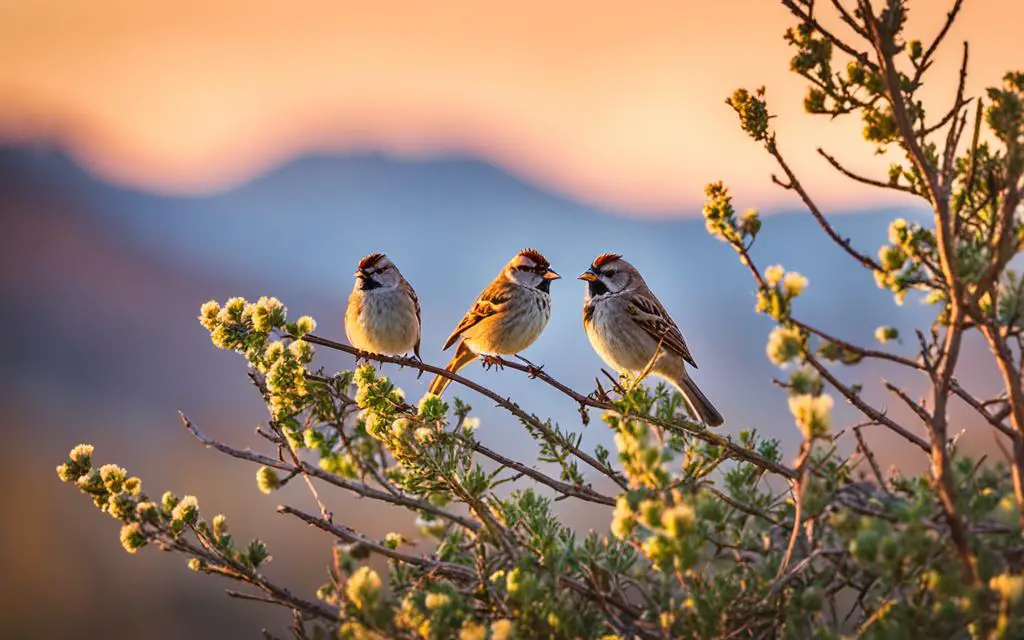
Old World sparrows, belonging to the family Passeridae, are native to Europe, Asia, and Africa. They are often referred to as “true sparrows” and include a large group of sparrow species in the genus Passer. These sparrows can be found on every continent except Antarctica, thanks to human introduction. Some well-known Old World sparrow species include the Eurasian tree sparrow, house sparrow, Cape sparrow, Shelley’s sparrow, Somali sparrow, yellow-throated sparrow, and rock sparrow.
New World Sparrows
New World sparrows, belonging to the family Passerellidae, inhabit the Western Hemisphere. Although they are not classified as true sparrows, they share similar characteristics with their Old World counterparts. New World sparrows are typically small to medium-sized birds, with plump bodies and a range of colors including brown, gray, and white.
Notable Species of New World Sparrows
Here are some noteworthy species of New World sparrows:
| Sparrow Species | Description |
|---|---|
| American tree sparrow | A migratory bird found in North America during winter. It has a distinctive dark central breast spot. |
| Dark-eyed junco | A common bird across North America, known for its grayish plumage and white outer tail feathers. |
| Black-chested sparrow | Endemic to the Galapagos Islands, this sparrow has a black chest and face with olive-brown upperparts. |
| Sooty fox sparrow | Found along the Pacific coast of North America, this sparrow has a rich brown coloration with streaks on its back. |
| Grasshopper sparrow | A small sparrow with a distinctive song resembling the sound of a grasshopper. |
| White-crowned sparrow | A striking sparrow with black and white stripes on its head and a melodic song. |
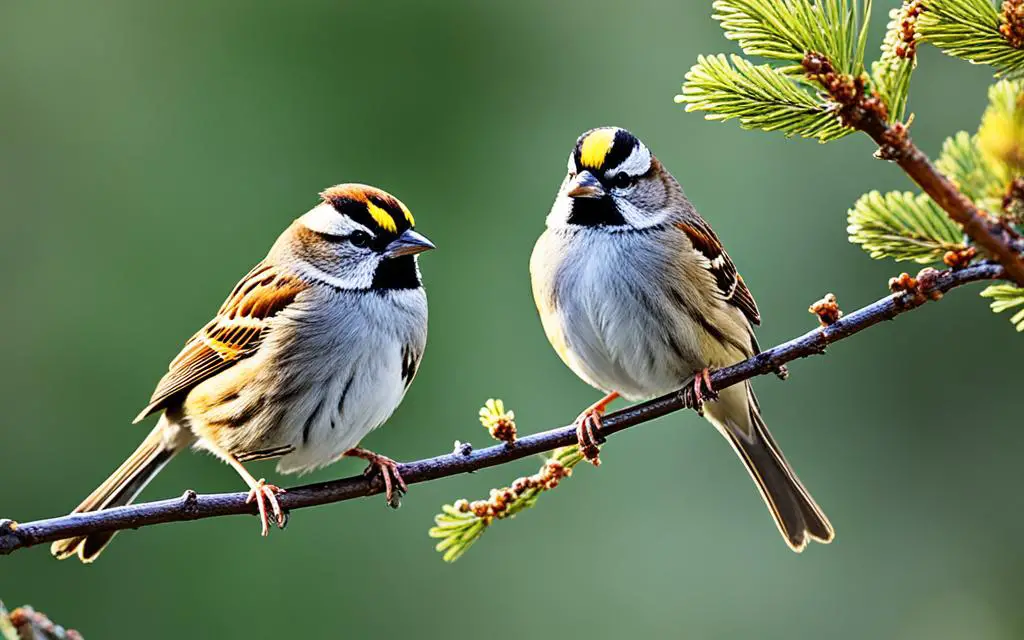
House Sparrow
The house sparrow, belonging to the Passeridae family, is a common sparrow species found worldwide. Native to Europe, parts of Asia, and Africa, these adaptable birds have also been introduced to North America, where they have thrived in urban areas. House sparrows are known for their ability to coexist with humans and can be observed in cities, towns, and farmlands.

Male house sparrows display more vibrant colors than females, boasting gray crowns and reddish-brown cheeks. They are often seen engaging in dirt baths, a noteworthy behavior that sets them apart from other bird species. House sparrows play an important ecological role, serving as pollinators and contributing to seed dispersal.
Eurasian Tree Sparrow
The Eurasian tree sparrow, a member of the Passeridae family, is a small bird endemic to Europe and Asia. While it shares similarities with house sparrows, Eurasian tree sparrows have distinct characteristics that set them apart.
Unlike their more populous counterparts, Eurasian tree sparrows are less common in North America, where the house sparrow dominates. These delightful small birds thrive in semi-open habitats such as farmlands, woodland edges, and towns adorned with trees and bushes.
Visually, Eurasian tree sparrows closely resemble house sparrows, making them easily confused. However, their charming presence and unique behaviors distinguish them. If you’re fortunate to encounter Eurasian tree sparrows, observe their acrobatic flights and their interactions with other birds.
Although Eurasian tree sparrows may not be as prevalent as some other sparrow species, they are year-round residents in specific regions, including Missouri, Illinois, and Iowa. These small birds contribute to the biodiversity of these areas, adding charm and life to the local ecosystems.
If you wish to attract Eurasian tree sparrows to your backyard, consider creating a bird-friendly environment. Providing nesting boxes, refreshing water sources, and planting shrubs and trees can help entice these delightful creatures to visit and potentially nest in your vicinity.
“Eurasian tree sparrows add a touch of elegance and diversity to the avian population, captivating bird enthusiasts with their resilience and adaptability.” – Birdwatching Enthusiast
| Characteristics | Eurasian Tree Sparrow | House Sparrow |
|---|---|---|
| Size | Small | Small to medium |
| Habitat | Semi-open habitats | Urban areas, farmlands |
| Geographical Distribution | Europe, Asia | Worldwide |
| Distinctive Features | Acrobatic flights, tree-dwelling | Urban adaptability |
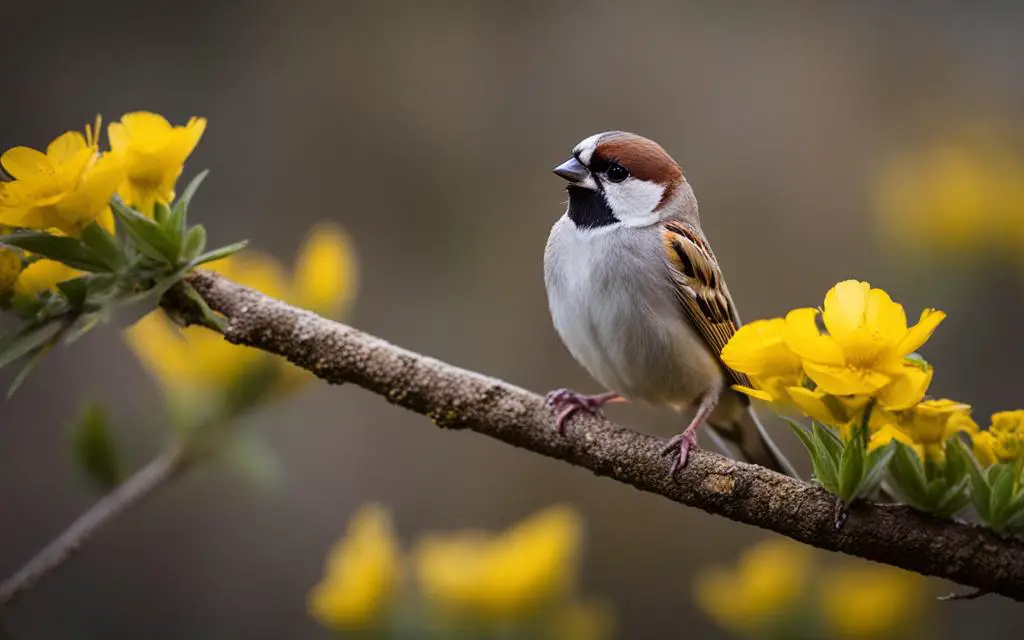
As you continue your exploration of sparrows, the next section will uncover the fascinating characteristics of Cape sparrows, native to southern Africa.
Cape Sparrow
The Cape sparrow is a charming bird species belonging to the Passeridae family. These social birds are native to southern Africa, specifically found in most regions below Angola. They thrive in semi-arid savanna areas, making them well-adapted to the local climate and habitat.
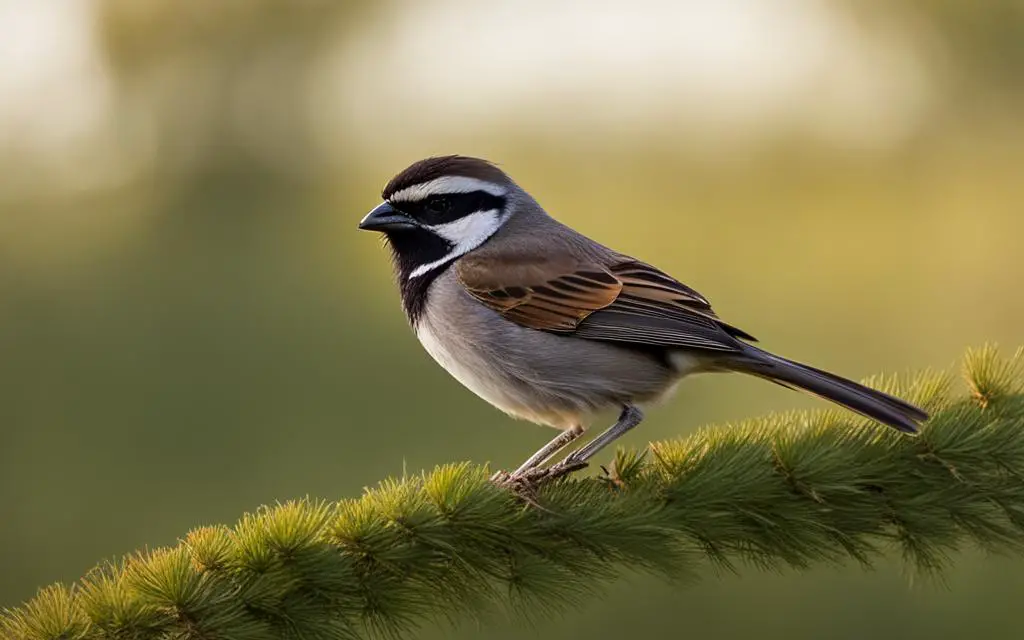
Male Cape sparrows are easily distinguishable by their black markings on the chest, face, and crown. On the other hand, females lack these markings and are predominantly gray in color, with a whitish-tan streak on the side of their head. These differences in appearance allow for easy identification between males and females.
Outside of the breeding season, Cape sparrows exhibit a nomadic behavior, traveling in flocks as they search for food. This social behavior helps them better navigate their environment and increases their chances of finding resources.
Unique Features of Cape Sparrows
“Cape sparrows are known for their distinctive black markings and their social nature, making them a delightful sight in the African savannas.”
Shelley’s Sparrow
Shelley’s sparrow, also known as the white Nile sparrow, is a fascinating bird species found in the savannas, grasslands, and shrublands of eastern Africa, specifically in countries like South Sudan, Ethiopia, and Uganda. Unlike many other sparrows, Shelley’s sparrows prefer to live away from urbanized areas and have smaller colonies. These magnificent birds are known for their unique nesting behaviors.
Males and females both participate in building nesting sites, displaying remarkable cooperation and dedication. The mating season for Shelley’s sparrows occurs from September to November, when they engage in courtship rituals and establish lifelong partnerships. It is a remarkable experience to witness these elegant birds as they create their nests and engage in their graceful mating rituals.
To give you a closer look at the habits and characteristics of Shelley’s sparrow, take a look at the table below:
| Species | Scientific Name | Location | Colony Size |
|---|---|---|---|
| Shelley’s Sparrow | Passer shelleyi | Eastern Africa (South Sudan, Ethiopia, Uganda) | Smaller colonies |
Witness the enchantment of Shelley’s sparrows in their natural habitat:
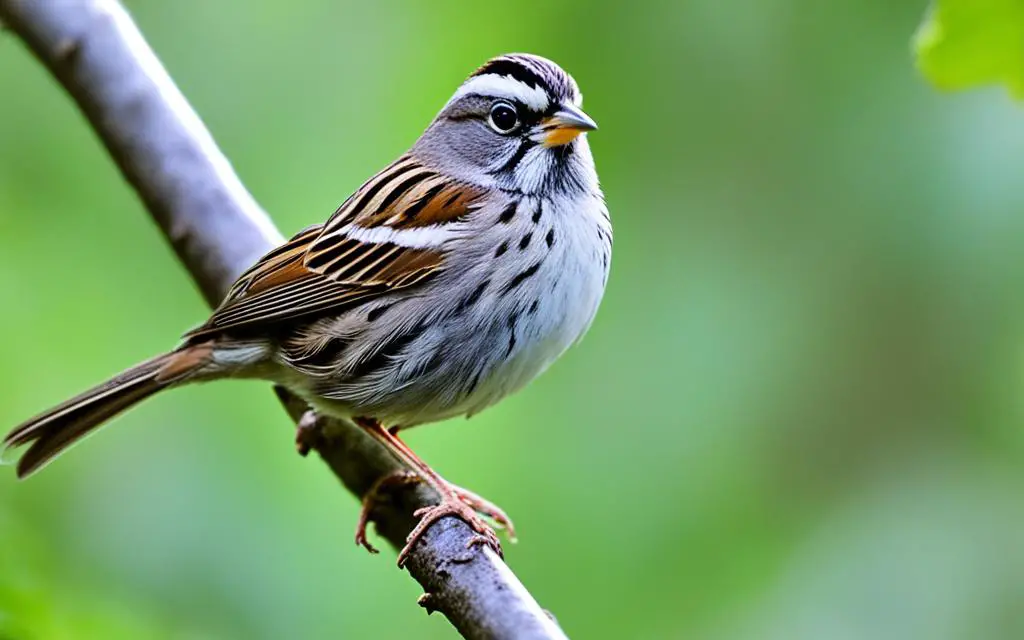
Somali Sparrow
The Somali sparrow is a non-migrant bird species belonging to the Passeridae family. These small sparrows are native to Somalia, Ethiopia, and Djibouti, which are located in Africa. Their preferred habitats include shrublands and grasslands, where they can find suitable food and shelter.
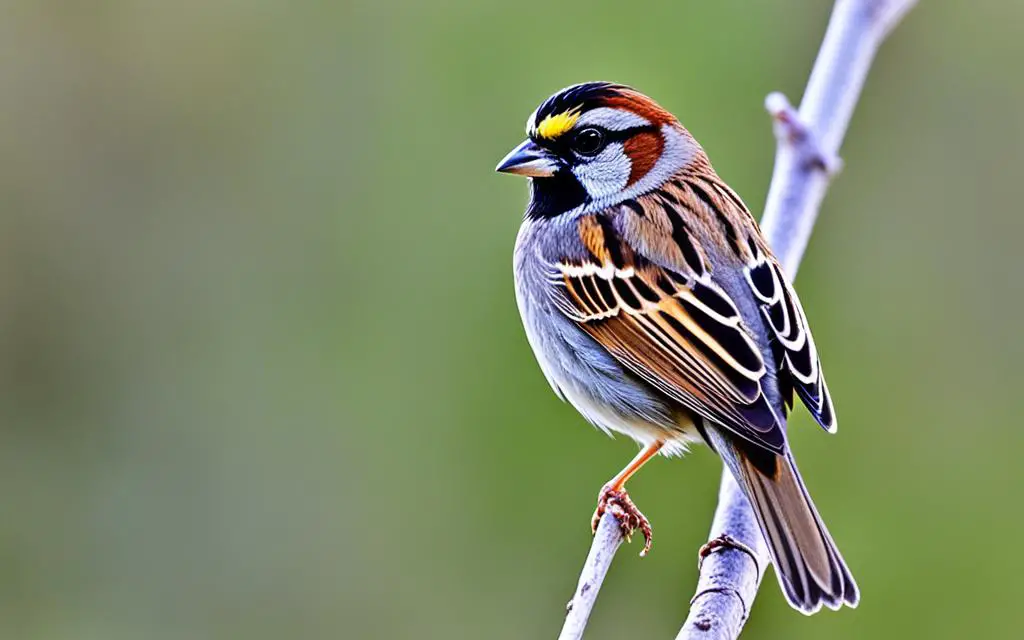
The Somali sparrow closely resembles the common house sparrow, but with a distinct feature in males: a reddish-brown crown. This particular characteristic sets them apart from other sparrow species and adds to their unique charm. They have a lifespan of approximately six years, contributing to their ecological role within their natural environments.
The Somali sparrow is currently categorized as a species of least concern in terms of conservation status. While it is important to monitor and protect all bird species, the Somali sparrow population is relatively stable and not currently at significant risk. This highlights the importance of preserving their habitats and promoting biodiversity in the region.
Conclusion
Sparrows, with their diverse species and global distribution, offer a fascinating glimpse into the rich tapestry of birdlife. From the Old World sparrows found in Europe, Asia, and Africa to the New World sparrows inhabiting the Americas, each species boasts its distinctive traits and adaptations. By familiarizing yourself with the different types of sparrows and their preferred habitats, you can cultivate a deeper appreciation for the beauty and diversity of these often-overlooked birds.
Creating a welcoming environment for sparrows in your own backyard is a simple yet rewarding endeavor. By providing essential resources such as birdhouses, nourishing food, clean water, and a bird-friendly habitat, you can attract and support these charming creatures. Marvel at the colorful plumage of the Cape sparrow or observe the social dynamics of a flock of Shelley’s sparrows. Each encounter offers a unique opportunity to witness the wonders of nature up close.
Embrace the presence of sparrows in your surroundings as they bring life and charm to your everyday life. Whether you live in a bustling urban setting or a tranquil countryside, sparrows can be companions throughout the year. Take a moment to appreciate the diversity of sparrow species and the joy they bring to your outdoor spaces. Every sighting is a reminder of the intricate web of life that exists all around us.
FAQ
How many types of sparrows are there?
There are two main groups of sparrows: Old World sparrows and New World sparrows.
What are the different kinds of sparrows?
Old World sparrows belong to the family Passeridae and are known as “true sparrows,” while New World sparrows belong to the family Passerellidae.
What are the different types of sparrows?
Some well-known Old World sparrow species include the Eurasian tree sparrow, house sparrow, Cape sparrow, Shelley’s sparrow, Somali sparrow, yellow-throated sparrow, and rock sparrow. Some notable species of New World sparrows include the American tree sparrow, dark-eyed junco, black-chested sparrow, sooty fox sparrow, grasshopper sparrow, and white-crowned sparrow.
What are the classifications of sparrows?
Old World sparrows belong to the family Passeridae, while New World sparrows belong to the family Passerellidae.
Where are Old World sparrows found?
Old World sparrows are native to Europe, Asia, and Africa and can be found on every continent except Antarctica.
Where are New World sparrows found?
New World sparrows are found in the Western Hemisphere.
What are the physical characteristics of sparrows?
Sparrows have small to medium-sized bodies with gray or brown feathers.
What is a common Old World sparrow species?
The house sparrow is one of the most widely distributed sparrow species.
Where are house sparrows native to?
House sparrows are native to Europe, parts of Asia, and Africa.
What is a common New World sparrow species?
The American tree sparrow is a notable New World sparrow species.
Where are Eurasian tree sparrows found?
Eurasian tree sparrows are native to Europe and Asia.
What is the habitat preference of Cape sparrows?
Cape sparrows are social birds found in southern Africa below Angola, living in semi-arid savanna areas.
Where are Shelley’s sparrows found?
Shelley’s sparrows are found in the savannas, grasslands, and shrublands of eastern Africa.
Where are Somali sparrows native to?
Somali sparrows are native to Somalia, Ethiopia, and Djibouti in Africa.
How can I attract sparrows to my backyard?
By providing suitable birdhouses, food, water, and a bird-friendly habitat, you can attract and support sparrows in your backyard.
What can I appreciate about sparrows?
Understanding the different types of sparrows and their habitats can help bird enthusiasts appreciate the beauty and diversity of these often-overlooked birds.
Source Links
- https://outforia.com/types-of-sparrows/
- https://www.trvst.world/biodiversity/types-of-sparrow/
- https://www.sparrowdaughter.com/the-global-distribution-of-sparrows/

My name is Shane Warren, the author behind Your Bird Buddy – your ultimate guide to the wonderful world of birds! Unleash your inner avian explorer as we delve into a vibrant library of knowledge dedicated to all things feathered. From learning about diverse bird species from across the globe to understanding their captivating habitats and behaviors, I’m here to fuel your passion for these magnificent creatures. Not only that, but I also provide valuable insights on being a responsible and informed pet bird owner. Join our vibrant community and let’s celebrate the feathered wonders of the world together – one chirp at a time. And be sure to join our Your Bird Buddy Community over on Facebook!

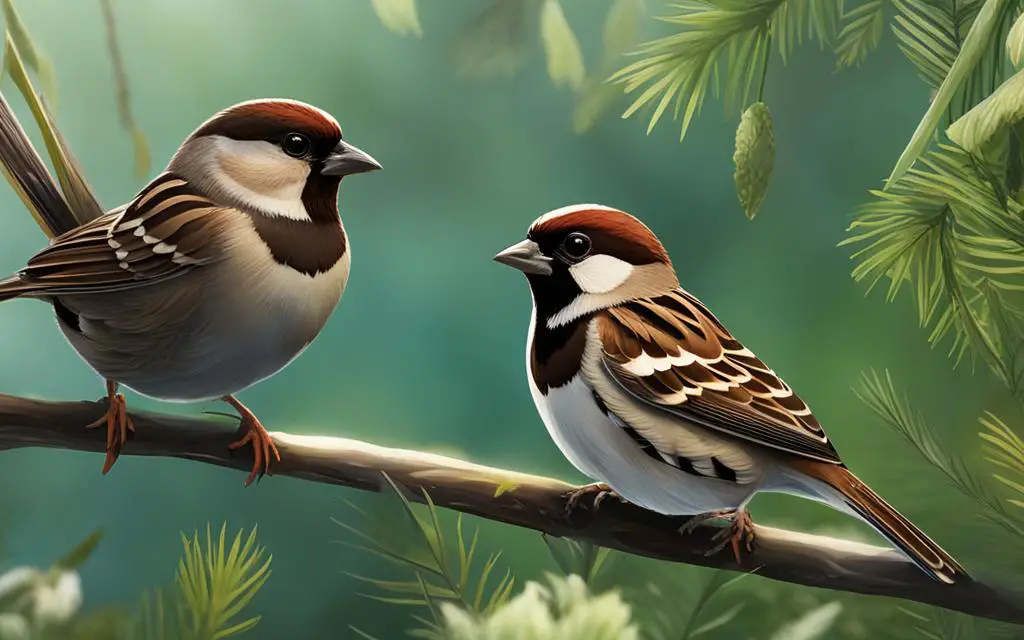
Comments are closed